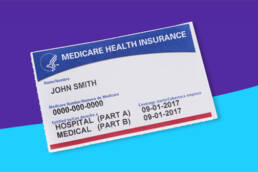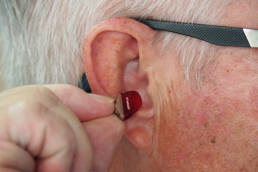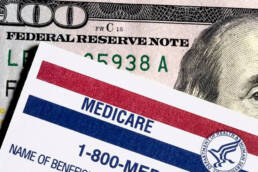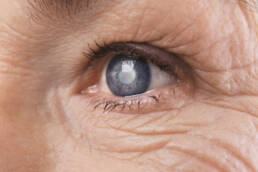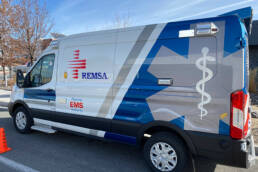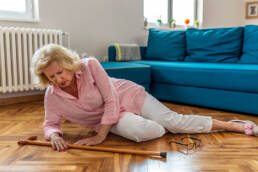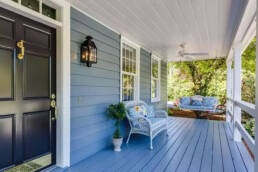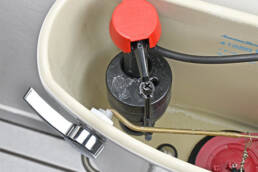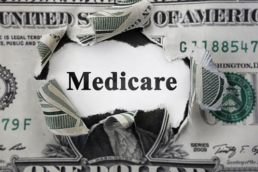Use online tools and in-person visits
If you’re looking for a high-quality nursing home, the advice from experts is loud and clear: Do your homework. They advise future residents and their families to dive into government records and conduct their own facility inspections.
They also recommend not rushing to choose a facility. Many people, however, are discharged directly from hospitals to one of the nation’s more than 15,000 nursing homes, leaving little time for research.
There’s no question that nursing homes face serious challenges. Many are short-staffed, a problem that has worsened in the wake of COVID-19. And even before the pandemic, studies found that many facilities were riddled with serious infections.
Those and other issues were underscored in an April 2022 report from the National Academies of Sciences, Engineering, and Medicine.
“The way in which the United States finances, delivers, and regulates care in nursing home settings is ineffective, inefficient, fragmented and unsustainable,” Betty Ferrell, director of the Division of Nursing Research and Education at City of Hope Medical Center near Los Angeles and the chair of the committee that compiled the report, said in announcing its release.
That makes it all the more important for older adults and their families to avoid last-minute searches by getting to know facilities in their area in advance, say government agencies, industry groups, and advocates for aging.
Narrow your search
Fortunately, the days are long gone of having to visit state regulatory offices to rifle through paper files. Much of that research can be done online, thanks to digital libraries of ratings and inspection reports.
Medicare provides an online tool to help users find and compare nursing homes, hospitals, and other care facilities in their area. It uses a five-star rating system and includes information about each ranked nursing home’s staffing quality measures, vaccination rates, and inspection reports.
Other useful digital resources include Nursing Home Inspect, a project of the nonprofit investigative news outlet ProPublica- ca that compiles more than 80,000 nursing home inspection reports into a searchable database, and NursingHome411, run by the nonprofit Long Term Care Community Coalition, which offers state-by-state data on facilities’ staffing, citations and ratings.
If a loved one is going straight to a nursing home from the hospital and you don’t have much time to choose, Richard Mollot, the coalition’s executive director, recommends limiting the selection to facilities with four- or five-star Medicare rankings. However, he notes that Medicare’s tool has strengths and weaknesses for assessing individual nursing homes.
For example, “the staffing measure is by far the most important and useful indicator of a facility’s quality,” Mollot says. However, due to the way Medicare calculates the ratings, a nursing home can rank low for staffing but still get four or five stars overall.
Conversely, “you may have a one-star home, where staffing is five stars,” says Roy Herzbach, regional ombudsman director at Legal Aid of West Virginia. “The numbers can be faulty.”
Studies have shown nursing homes should provide at least 4.1 hours of nursing care per resident per day, including at least 45 minutes of attention from a registered nurse, says Charlene Harrington, a professor emeritus of social behavioral sciences at the School of Nursing at the University of California,
San Francisco, who has written extensively on nursing home staffing and finances. But more than a third of five-star nursing homes don’t meet that standard, she says.
Speak to a range of employees, from administrators to culinary directors and activity managers, advises Howard Braxton, vice president of marketing for the Kendal Corporation, a system of nonprofit long-term care and retirement communities.
Look at residents’ grooming, Food
“Listen in the hallways. Look at the hair, clothing, teeth, and fingernails of the residents,” says Tony Chicotel, staff attorney at the San Francisco-based patient advocacy group California Advocates for Nursing Home Reform.
“Try the food,” Braxton says. “Check out the menu. Ask about a variety of food. Ask to sit in the dining room so that you can try the food and gauge how staff and the residents interact.”
Ask about activities
See what the home offers in the way of lectures, art classes, and other ways residents can stay intellectually active and engage with each other, says Jodi Eyigor, director of nursing home quality and policy at LeadingAge, a national association of nonprofit nursing homes and other providers of aging services.
Observe response times
“How long does it take for call lights to be responded to? Are residents standing in hallways waiting for medication?” asks Shannon Gimbel, manager of the ombudsman program for the
Denver region’s Area Agency on Aging and one of hundreds of advocates nationwide who can offer guidance on nursing homes.
Pandemic priorities
COVID-19, which has devastated nursing home populations, introduced a new set of concerns and considerations for families seeking placements for loved ones. Here are some things to ask, and know, about what facilities are doing to reduce the spread of infection and disease.
Air quality: Check if your candidate facilities have invested in portable room cleaners equipped with high-efficiency particulate air (HEPA) filters.
Infection control: Federal regulations mandate that nursing homes have an infection control and prevention program with written standards for issues such as how to identify infections and prevent spread to other residents or staff.
Hygiene and mitigation: “Core practices” such as hand hygiene and the use of personal protective equipment (PPE) are required, according to the AHCA/NCAL. Nursing homes may customize other infection control procedures based on local factors, such as COVID-19 spread in the community.
On your visit, look for how employees observe protective and preventive measures such as PPE use and ask questions like:
– Does the facility have a staff member dedicated full-time to infection control?
– Does it regularly test staff and residents?
– Are visitors required to take a test, or show proof of a recent negative test, to enter?
– What happens when residents test positive? Are they moved into a dedicated COVID-19 unit or quarantined in their room?
– How are residents and families notified when there’s a case on-site? Are there changes in activities, communal dining, or visitor policies when that happens?
Infection control isn’t just a COVID concern. Well before the pandemic, nursing homes struggled with infection problems. Fully 82 percent of facilities surveyed by the Centers for Medicare & Medicaid Services (CMS) between 2013 and 2017 were cited for infection-control deficiencies, the U.S. General Accounting Office reported in 2020.
Influenza can spread rapidly within nursing homes, and more than 1 in 11 people older than 65 who contracted a healthcare–associated infection called Clostridioides difficile died within a month of diagnosis, according to the U.S. Centers for Disease Control and Prevention (CDC). C. diff spreads by tiny spores left on bedside tables and other surfaces, making thorough cleaning essential.
Understand your payment options
Private-pay rates at nursing homes are typically expensive, and so are the amenities. The 2021 national median for monthly nursing home costs was $7,908 for a shared room and $9,034 for a private room, according to the 2021 Cost of Care Survey by insurance company Genworth.
Prices for care vary widely by state and region. For instance, a private room costs a monthly median of $12,775 in New York State, more than twice the median rate in Oklahoma.
Long-term care insurance may pay some costs for nursing home residency, as does Medicaid if you qualify. Medicare, however, does not cover long-term residency in a nursing home. It might pay some costs of short-term stays under specific, limited circumstances. For example, a doctor might send your loved one to a skilled nursing facility for specialized care and rehabilitation after a hospital stay. If the patient had a stroke or serious injury, recovery could continue there. In such instances, original Medicare can pay a portion of the cost for up to 100 days in a skilled nursing facility. But there are strict rules: The patient must have received at least three consecutive days of inpatient hospital treatment. He or she must be admitted to the skilled nursing facility within 30 days of leaving the hospital. Skilled nursing care must be for the same illness or injury, or for a condition related to it.









































